
Mr. Isaac
Leave a message
Mr. Isaac
Leave a messageEditor`s Note: Everyone please welcome Michael Hazy, founder of Phantom Lacrosse and the Phantom Pocket, to Lacrosse All Stars. Michael raises some great points about learning the game in this article titled `Lacrosse: Does The Way We Teach It Work? Check out the Phantom Pocket so new players learn good form and improve.
Everyone has beginner form when they start playing lacrosse. It`s natural. Think of the way everyone throws a baseball the first time. Starting with bad form is guaranteed, but what`s the big deal? Well if your first throw is bad, that`s ok, but if your thousandth throw is bad, you want to quit.
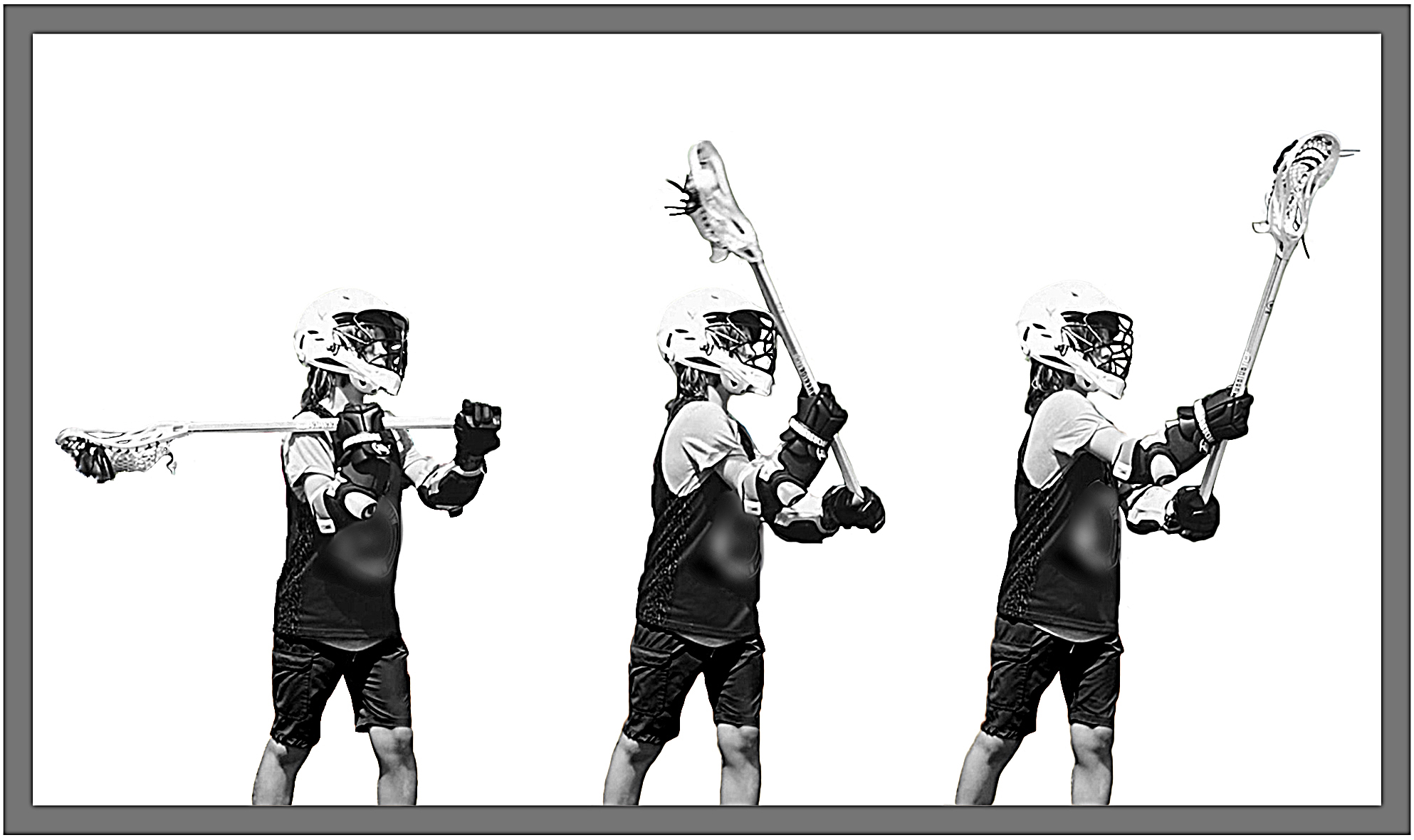 Player demonstrating natural beginner form: a [bottom-hand pivot."
Player demonstrating natural beginner form: a [bottom-hand pivot."Boys` youth programs commonly teach good form at the first practice and then tell players to improve on their own with wall ball. Players still throw, catch and shoot in practice, but without much focus on changing each player`s natural form to good form. Every other sport helps each player learn good form in practice because good form is not intuitive. Imagine the success rate if new golfers were expected to teach themselves how to swing after one lesson. Only a few players would succeed.
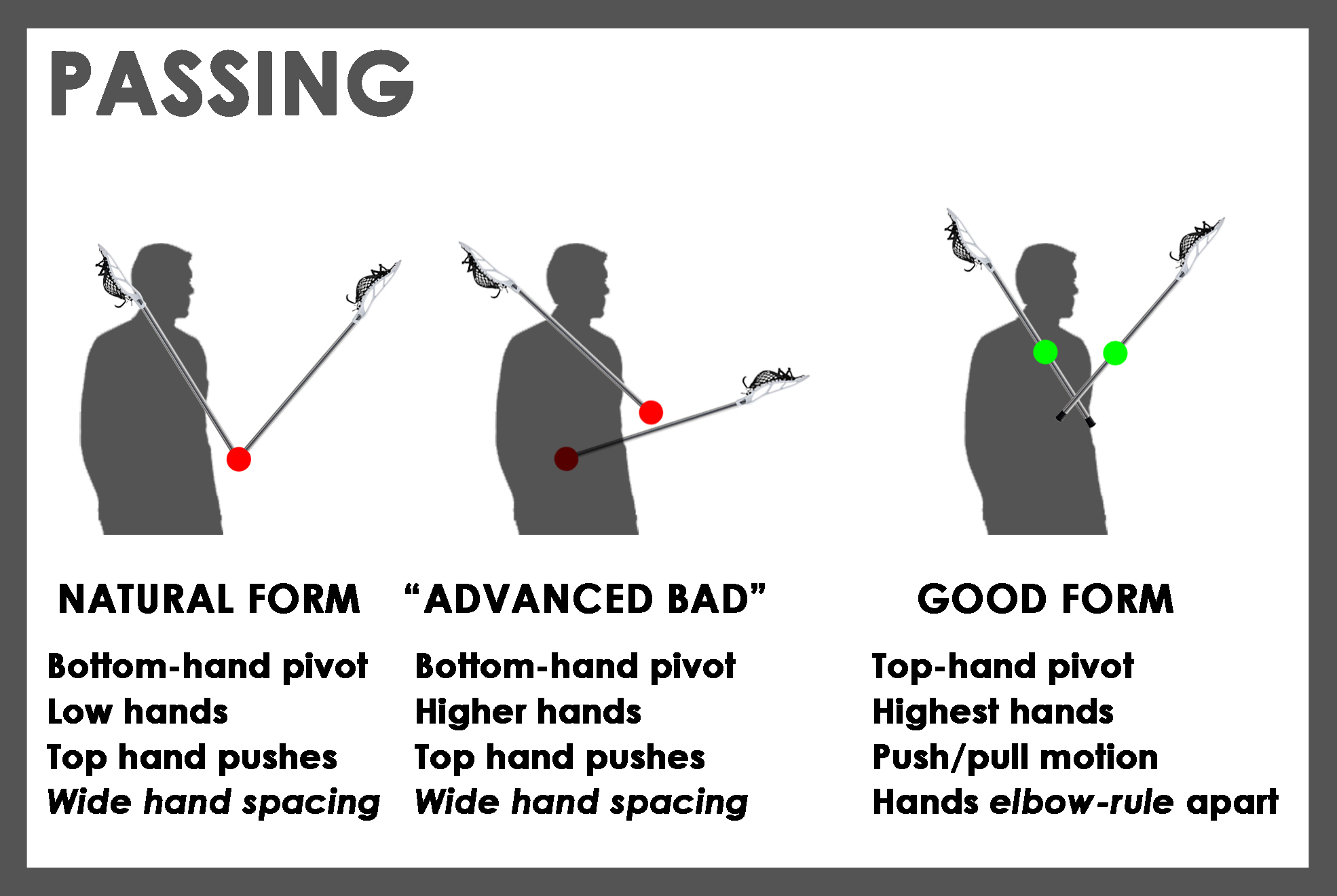 Beginners can`t see the difference between natural form and good form when using a short pass. The difference between passing with a [bottom-hand pivot" and a [top-hand pivot" is too subtle.
Beginners can`t see the difference between natural form and good form when using a short pass. The difference between passing with a [bottom-hand pivot" and a [top-hand pivot" is too subtle.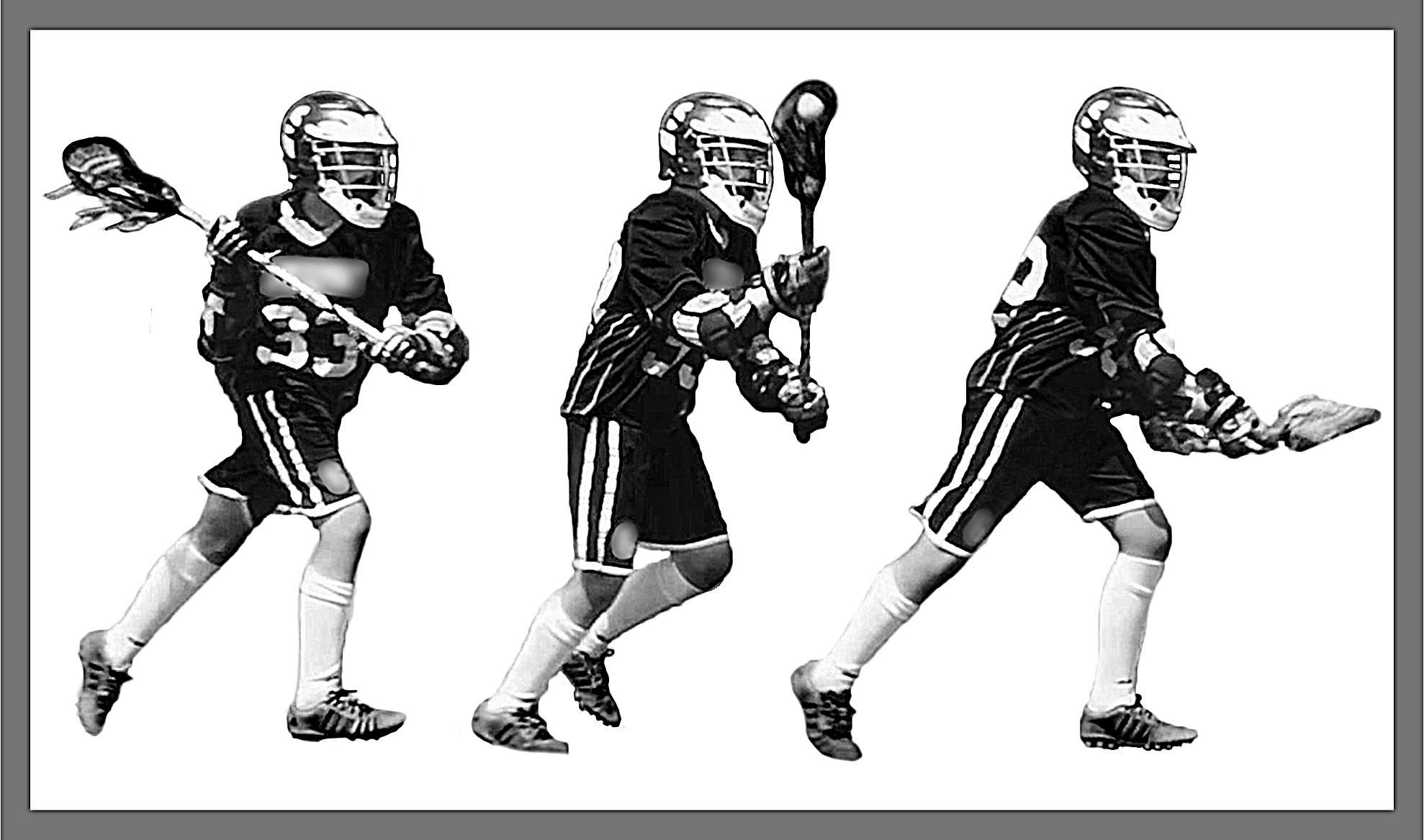 Player demonstrating [advanced bad" form.
Player demonstrating [advanced bad" form. Lacrosse has a unique problem: we can`t teach good form in practice if everyone`s pocket throws differently. It`s like if hockey players all learned with sticks warped in different directions. For decades no solution existed other than fixing (and re-fixing) every pocket, which also meant someone had to be a competent stringer and spot when each player`s pocket went bad. Traditional lacrosse communities have parents, siblings and older teammates to fix pockets and teach good form outside of practice. This model still produces the strongest players today, but only a small number of youth coaches can maintain everyone`s pocket and teach good form by themselves.
As lacrosse grew, this extra help didn`t grow with it. Also, new programs often had coaches who were inexperienced, didn`t string or who never even played lacrosse. Because teaching good form and fixing pockets require experience, one simple idea took over: [wall ball, wall ball, wall ball." We started expecting beginners to teach themselves good form on their own. (Maybe not your program, but lots of programs.) Unfortunately, players can`t learn good form by playing wall ball with their natural form. That just reinforces bad form until it`s almost impossible to change. Good form is a completely different motion. Add a bad pocket, and these players don`t have a chance. No amount of wall ball can make a bad pocket become good.
Today we see more focus on good pockets, but still almost zero focus on the importance of teaching good form. It`s like if baseball emphasized using a round ball but never taught beginners how to throw one. Beginners need equipment that works, but without help they still throw and catch like beginners.
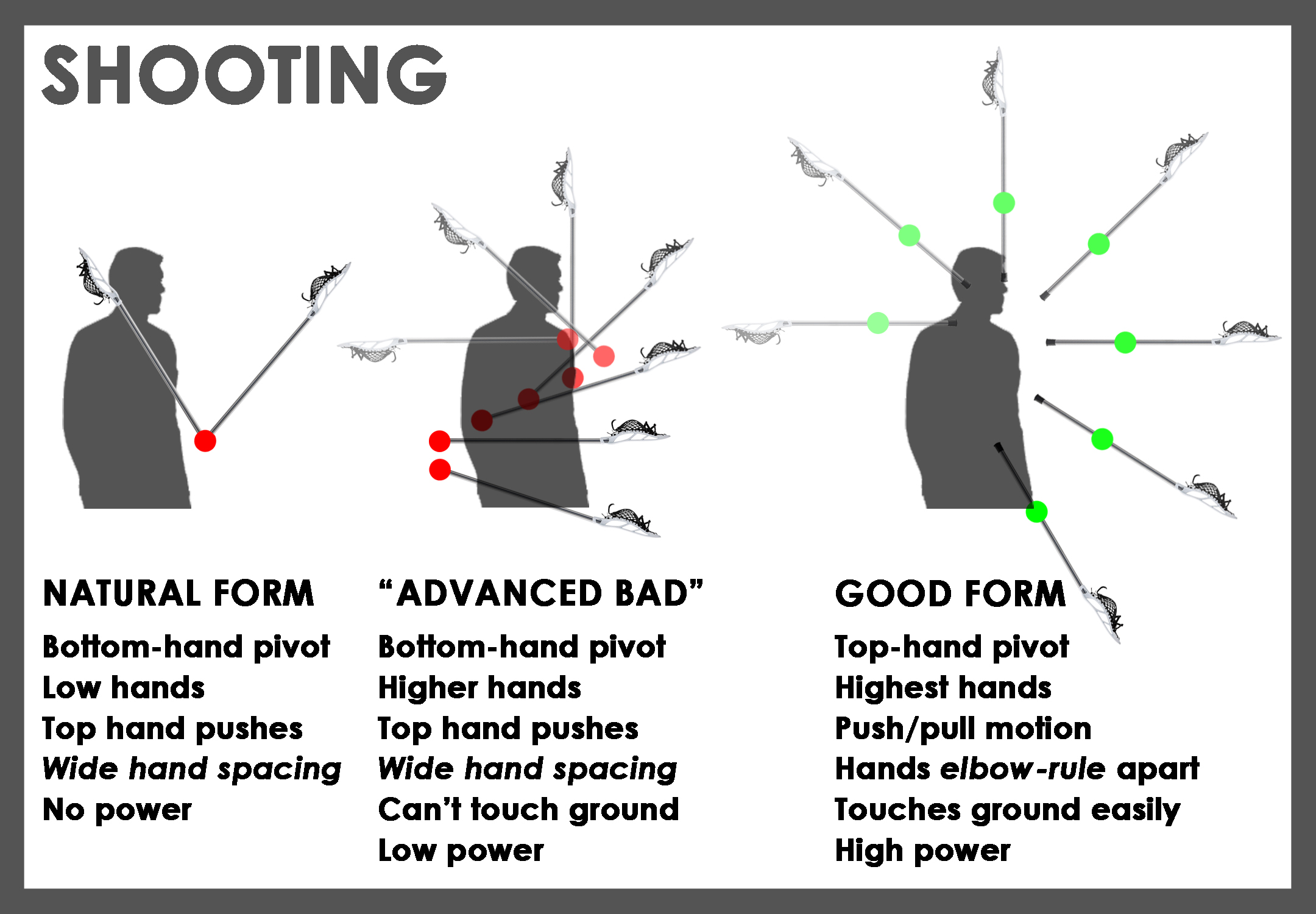 Self-taught players go from natural form to [advanced bad."
Self-taught players go from natural form to [advanced bad." 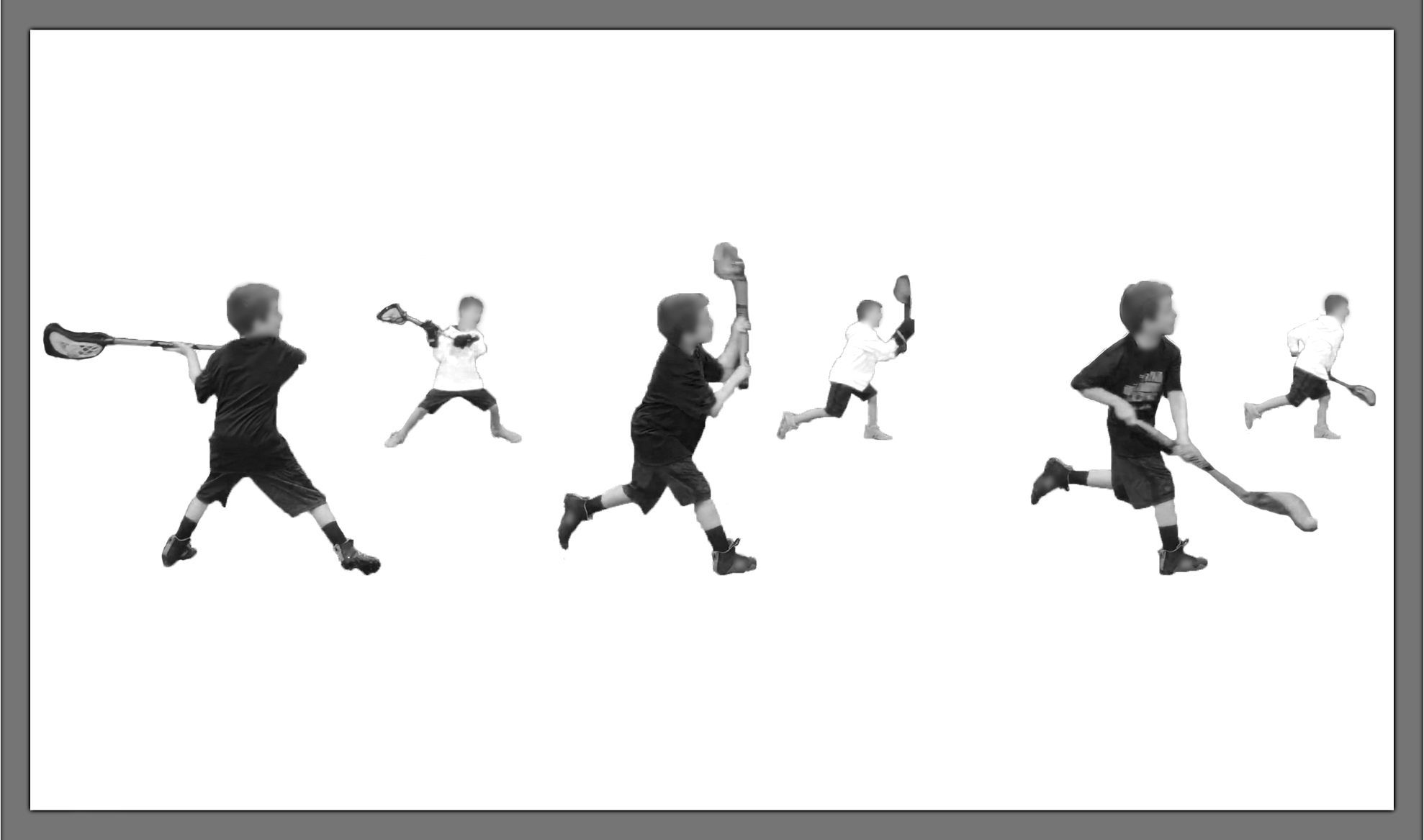 Players demonstrating [advanced bad" form using a good pocket.
Players demonstrating [advanced bad" form using a good pocket. For a long time lacrosse had incredible growth. Today boys` youth lacrosse isn`t growing – it`s shrinking. 2017 was the first year ever that boys` youth participation was negative (-3.2%). (2018 data due in June.) More players quit than joined, and boys` youth is the biggest demographic. Girls` youth, HS and boys` HS still showed modest growth (+1.2%, +4.0% & +1.9%, respectively). Something different is happening in the boys` youth game.
US Lacrosse asked players why they quit, and the top answer was that [it wasn`t fun anymore." That`s interesting because we often hear it`s because of single-sport specialization, pressure from parents or general declines in youth sports overall. Those are important considerations, but it might be most important to listen to what players are actually saying.
What makes lacrosse fun? Think about what players (of every age) do before practice. We`re all ripping shots. Sometimes we throw a huge fake or a behind-the-back pass. I still remember how cool it was the first time I saw someone do an inverted one-handed cradle. These are the things that made us [practice" on our own because they`re fun. Banging a sidearm ripper off the crossbar is awesome even if you`re the only person who sees it.
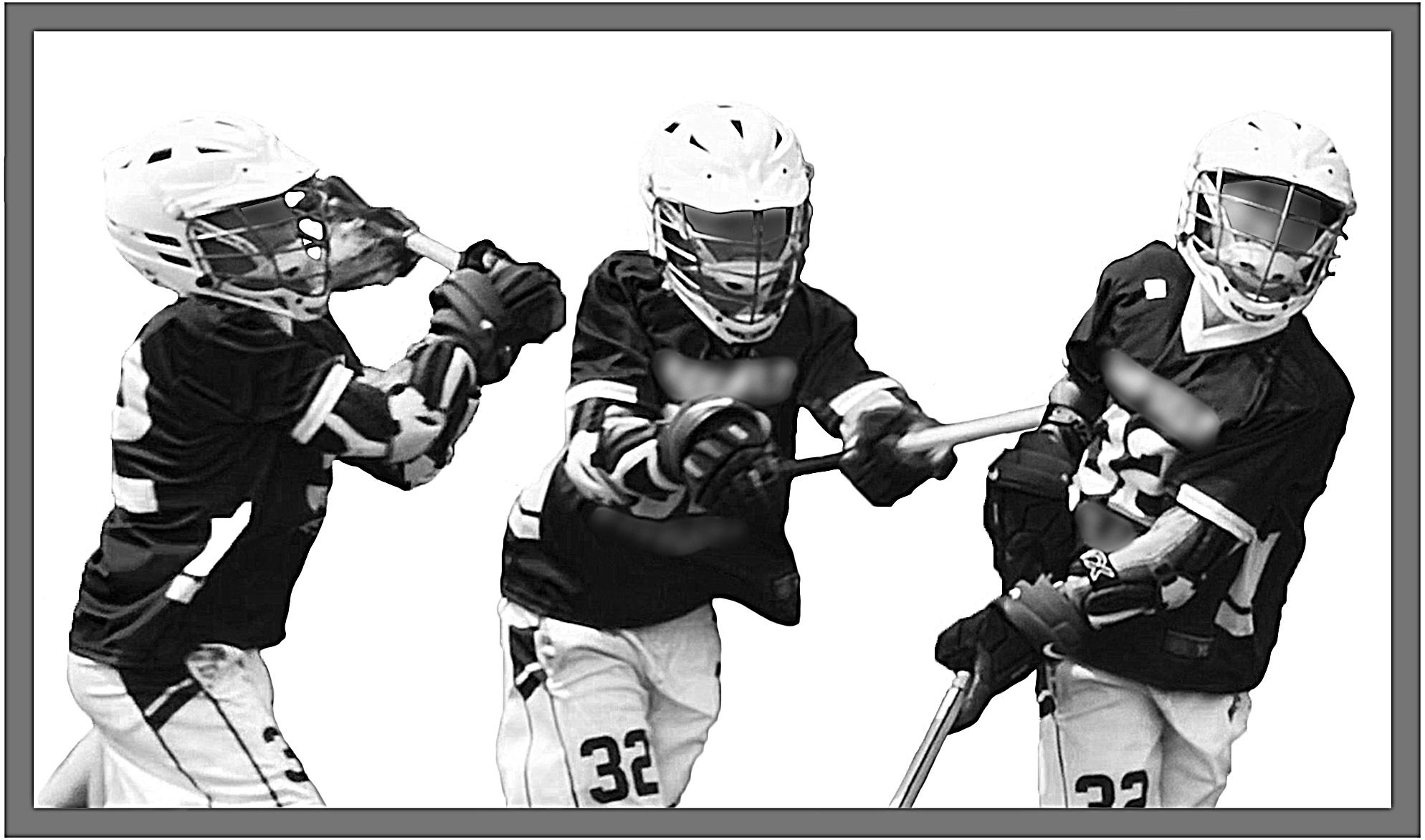 Player demonstrating the top-hand pivot that every advanced player uses.
Player demonstrating the top-hand pivot that every advanced player uses. What`s not fun? Playing for a few years and never being able to do that. If you`re working hard but not improving, lacrosse isn`t fun – it`s frustrating. Especially if you have teammates who become stars because they`re getting extra help outside of practice. Players who have to teach themselves with wall ball (and whatever pocket they have) are most likely to quit after a few years because they think they`re bad at lacrosse. Instead of being bad at lacrosse, most of them just got bad advice. Today we`re seeing more of them quit than ever. The difference isn`t skill – it`s information. Players succeed if we give them the tools to succeed.
This problem has been unaddressed for so long, that it`s hard to know where to start. We`ve all seen a player with form that made us think, [No one has enough time to fix that." The few resources that exist give conflicting advice that`s often incomplete. Plus most coaches don`t know how to string. How can we do it? It`s actually pretty simple.
FIRST. Start watching your players` follow-through instead of watching the ball. Their follow-through tells us who has beginner form. If we watch the ball, we often conclude that a player`s form is good if their pass is caught or if their shot goes in. Once we start looking at follow-through, we can see that many (maybe all!) of our youth players still throw and shoot like beginners. Without help, they`re going to keep doing it until they quit.
SECOND. Test players with an overhand shot from 5-10 yards. Ask them to follow through until their stick head touches the ground. Watch their form instead of the ball. Players with beginner form won`t get near the ground. They`ll bend and struggle to get close (maybe cheating by sliding their top hand down). Players with good form can easily touch the ground when they`re standing almost straight up. A slow motion video on your phone makes the difference even easier to see.
The difference is where their stick pivots: beginners use a [bottom-hand pivot" and advanced players use a [top-hand pivot." Players using a bottom-hand pivot need help.
Learning a top-hand pivot is the key to success in lacrosse. Once you can spot it, you`ll see every college and pro player does this. Players can only do it if all three things work: hand grip, hand spacing and bottom hand motion. All three have to be right or they physically can`t do it. It takes a little help to learn, but the first time a player throws with a top-hand pivot it`s like a light goes off in their head. They feel the added power they get for free by using a long motion that matches their body`s throwing mechanics. A top-hand pivot makes lacrosse fun, and the more a player practices with a top-hand pivot, the more fun it becomes.
THIRD. I made a new type of pocket that only works with good form, so it`s much easier for players to break their natural bad habits and start improving. I did this to give every player the same opportunity to enjoy the game over a long career that I had. If I never learned good form, I would have quit after a few years, as most young players do today. Instead, learning good form let me overcome a physical disability, and I`m about to hit my 35th anniversary playing. Most adult players would say that lacrosse has made a positive impact on their lives. There`s something special about lacrosse. Every young player taking the field this spring deserves the chance to reach their goals. The more we teach good form early, the more players who will understand what makes our sport so great.
I`ve made free videos that make teaching good form easy. The videos show the hand grip, hand spacing and bottom hand mistakes that prevent beginners from throwing correctly and how to help players transition to throwing like a pro. Combined with the Phantom Pocket, learning good form is even easier. The Phantom Pocket doesn`t let players use their natural beginner form (throwing or catching). The more a player`s form improves, the better the pocket works, because of its unique, patented design. It teaches good form - even when they`re practicing on their own. It`s game legal and it never changes. That`s why the Ohio Machine uses the Phantom Pocket at their youth clinics and why coaches and players are starting to use it around the world. Other pockets let a player throw like a beginner forever, and bad pockets guarantee it.
The negative growth in the boys` youth game should be concerning to everyone. Maybe it`s time to reevaluate how we`re teaching them. We all want players who enjoy the game and improve, but they can`t teach themselves. The first time a player rips a shot with good form, they`ll never look back. Good form is what makes lacrosse fun, and when our players are having fun and improving, everyone wins. Phantom is partnering with a select number of teams in the US and Canada who want to stop throwing with natural form and start winning. Contact us atinfo@phantomlacrosse.com to learn more.

Privacy statement: Your privacy is very important to Us. Our company promises not to disclose your personal information to any external company with out your explicit permission.

Fill in more information so that we can get in touch with you faster
Privacy statement: Your privacy is very important to Us. Our company promises not to disclose your personal information to any external company with out your explicit permission.